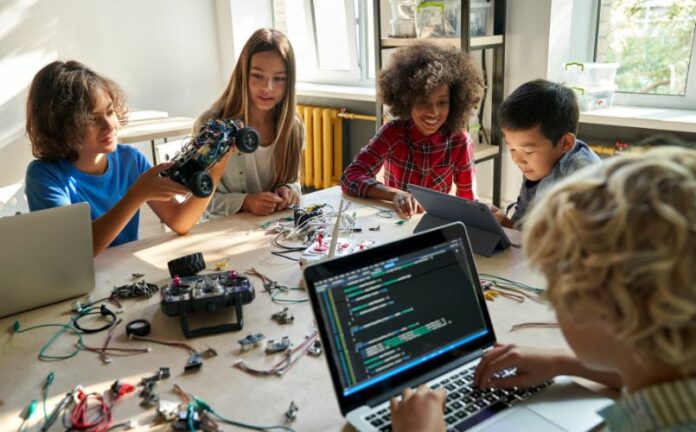Gone are the days of chalkboards and dusty erasers; today, classrooms echo with the hum of servers and the quiet rhythm of algorithms. Education — one of humanity’s oldest institutions — is undergoing a profound transformation. At the center of this change stands Generative AI, a remarkable technology capable of producing new content — from text and images to code and music. As this innovation enters the world of learning, a crucial question arises: will Generative AI usher in a new age of personalized education, or will it lead to digital overload, overwhelming students and teachers alike?
For institutions like the Boston Institute of Analytics (BIA) — where data science and AI are not just academic subjects but essential skills — this question is both a challenge and an opportunity.
The Promise of Personalized Learning: Tailoring Education for Every Mind
Imagine a classroom where each student receives an education custom-designed for their pace, style, and goals. That’s the promise of Generative AI.
-
Adaptive Content Creation:
Generative AI can create dynamic, flexible learning materials. Textbooks could evolve into living documents that simplify explanations, generate new examples, or design extra exercises for students who need them. For example, a student at BIA struggling with a complex machine learning concept could instantly receive simplified explanations, interactive examples, or tailored coding challenges. Education would shift from one-size-fits-all to personalized and responsive. -
Intelligent Tutoring Systems:
AI tutors powered by generative models can provide detailed feedback, suggest alternative solutions, and engage in human-like dialogue. In advanced programs — such as BIA’s Generative AI course — students could get real-time support while working on intricate data problems, with AI offering hints rather than direct answers, preserving creativity and critical thinking. -
Dynamic Assessment and Feedback:
Grading and evaluation can be time-consuming, but Generative AI can automate assessments, generate personalized quizzes, and provide immediate, constructive feedback. Students wouldn’t just know what they got wrong, but why, complete with explanations and learning resources — turning assessment into a continuous learning experience. -
Personalized Learning Paths:
Generative AI can map out custom learning journeys by analyzing a student’s progress, goals, and interests. For a learner in a Generative AI course, this might include recommending research papers, open-source projects, or supplementary modules — crafting a roadmap toward mastery. -
Bridging Language Barriers:
By translating content and generating multilingual support, Generative AI makes education more inclusive. Students from around the world can access the same high-quality materials, regardless of their native language.
The Specter of Digital Overload: When Innovation Becomes Too Much
Yet, beneath the optimism lies a serious concern — digital overload. Technology, if unchecked, can overwhelm rather than empower.
-
Information Overload:
With AI generating limitless content, students may struggle to filter what’s essential. The constant influx of AI-created materials could cause fatigue and reduce engagement, replacing curiosity with confusion. -
Quality Control and Misinformation:
Generative AI is not infallible. It can produce inaccurate, biased, or misleading information. Educators must teach students how to critically evaluate AI-generated output — an essential skill in data science and AI education. -
Ethical Dilemmas and Academic Integrity:
AI’s ability to generate essays, code, and research papers raises serious ethical concerns. Detecting authentic student work becomes harder, and dependence on AI could erode originality and critical thought. Academic institutions must establish firm policies for responsible AI use. -
Digital Divide:
Access to AI tools isn’t universal. Students with limited resources may fall behind, widening the educational gap between those who can afford AI-driven learning and those who cannot. -
Teacher Training and Adaptation:
Educators need new skills to effectively integrate AI into teaching. Without proper training, AI can feel like an added burden instead of a support system. -
Over-Reliance and Skill Erosion:
If students rely too heavily on AI for explanations and writing, essential skills like problem-solving, critical thinking, and creativity may decline. AI should enhance human learning — not replace it.
Finding Balance: The Future of Generative AI in Education
The debate between personalized learning and digital overload is not a binary choice. The key lies in balance — leveraging AI’s strengths while maintaining the integrity of human-centered learning.
For institutions like the Boston Institute of Analytics, the path forward includes:
-
Curating AI Tools Carefully: Select AI systems that enhance learning objectives, not those that simply add noise.
-
Promoting AI Literacy: Teach students how AI works, its limitations, and ethical implications — creating responsible users, not passive consumers.
-
Empowering Educators: Train teachers to effectively use AI in classrooms while maintaining human guidance and empathy.
-
Maintaining Human-Centric Learning: Keep critical thinking, creativity, and collaboration at the heart of education.
-
Establishing Ethical Guidelines: Develop clear standards for the ethical use of Generative AI, protecting academic integrity.
-
Focusing on Skills Over Content: As AI handles routine tasks, education should focus on higher-order thinking — analysis, synthesis, and evaluation.
Final Thoughts: A New Dawn, Not a Digital Deluge
Generative AI represents more than technological advancement — it’s a reimagining of how we create, share, and understand knowledge. If used wisely, it can make learning more personalized, inclusive, and dynamic than ever before. But if adopted without foresight, it risks turning education into an endless stream of artificial noise.
Institutions like the Boston Institute of Analytics are leading the way — integrating AI mindfully, fostering critical thinking, and ensuring that human creativity remains at the center of education.
The goal is not to choose between personalized learning or digital overload, but to design a future where Generative AI enhances discovery, deepens understanding, and empowers human potential. The next era of education belongs not to machines, but to the partnership between human curiosity and artificial intelligence.

